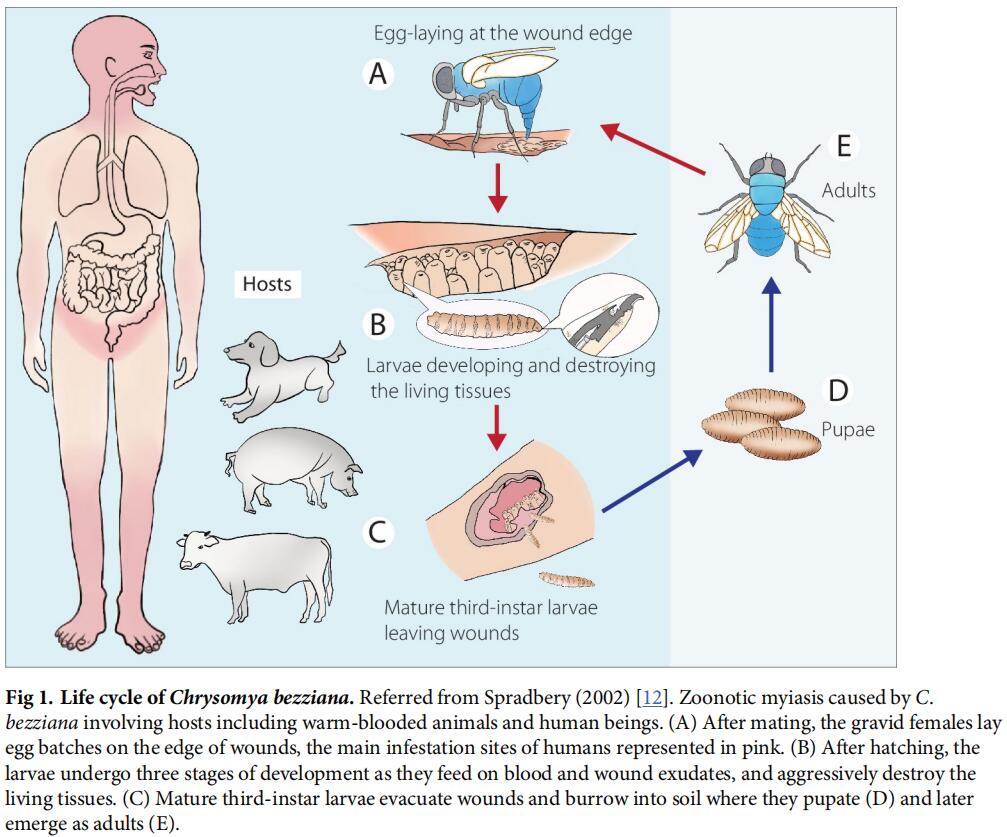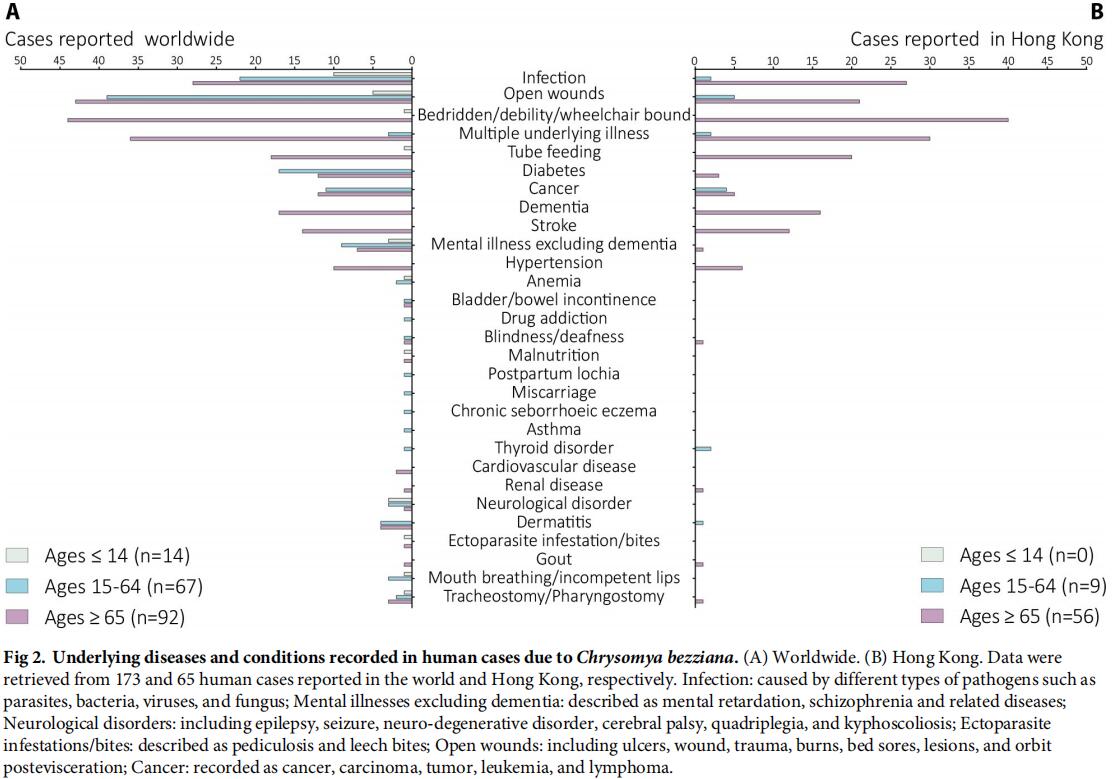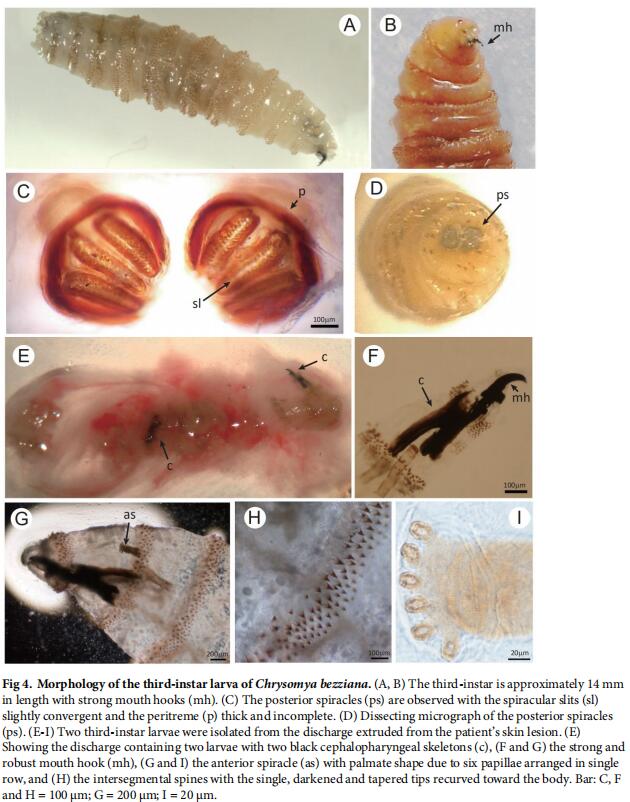Xianyi Zhou#, Dzinkambani Moffat Kambalame#, Sitong Zhou#, Xiang Guo#, Dan Xia Yemei Yang, Rangke Wu, Juan Luo, Fenglong Jia, Mingchi Yuen, Yuehua Xu, Geyang Dai, Li Li, Tian Xie, Santhosh Puthiyakunnon, Wenxia Wei, Lixian Xie, Siting Liang, Yuqin Feng, Songgen Huang, Yongxuan Hu, Qianzhen Mo, Rongjia Mai, Xiaoqing Zhang, Philip Spradbery*, Xiaohong Zhou*
ABSTRACT
Background
Myiasis due to Old World screw-worm fly, Chrysomya bezziana, is an important obligate zoonotic disease in the OIE-list of diseases and is found throughout much of Africa, the Indian subcontinent, southeast and east Asia. C. bezziana myiasis causes not only morbid ity and death to animals and humans, but also economic losses in the livestock industries. Because of the aggressive and destructive nature of this disease in hosts, we initiated this study to provide a comprehensive understanding of human myiasis caused by C. bezziana.
Methods
We searched the databases in English (PubMed, Embase and African Index Medicus) and Chinese (CNKI, Wanfang, and Duxiu), and international government online reports to 6th February, 2019, to identify studies concerning C. bezziana. Another ten human cases in China and Papua New Guinea that our team had recorded were also included.
Results
We retrieved 1,048 reports from which 202 studies were ultimately eligible for inclusion in the present descriptive analyses. Since the first human case due to C. bezziana was reported in 1909, we have summarized 291 cases and found that these cases often occurred in patients with poor hygiene, low socio-economic conditions, old age, and underly ing diseases including infections, age-related diseases, and noninfectious chronic diseases. But C. bezziana myiasis appears largely neglected as a serious medical or veterinary condi tion, with human and animal cases only reported in 16 and 24 countries respectively, despite this fly species being recorded in 44 countries worldwide.
Conclusion
Our findings indicate that cryptic myiasis cases due to the obligate parasite, C. bezziana, are under-recognized. Through this study on C. bezziana etiology, clinical features, diagno sis, treatment, epidemiology, prevention and control, we call for more vigilance and aware ness of the disease from governments, health authorities, clinicians, veterinary workers, nursing homes, and also the general public.
PLoS Negl Trop Dis. 2019; 13(10): e0007391.
DOI : https://doi.org/10.1371/journal.pntd.0007391


